Education platforms are usually spinning many plates: supporting students, teachers, and parents with varying needs, organizing vast amounts of content, and adhering to strict data security requirements. This can mean a crash course in chaos… and custom internal apps can be the difference between productivity and an organizational nightmare.
With the right internal tool setup, you can:
- Strategically manage education content, including editing, creating, and authoring capabilities, with ease.
- Understand and apply data analytics intelligently and securely.
- Maintain responsive and efficient communication with your students and educators.
Complex needs like those of education platforms require complex solutions - but the tricky problems might be easier to solve than you think. With Retool, you can build highly customized apps that handle your unique workflows.
What's more, by using Retool, you'd be in good company too - we've worked with education giants like SeeSaw and Chegg to build better apps on Retool to support their teams.

Why build Education apps on Retool?
Where traditional app development can take months and years, Retool simplifies the repetitive parts, allowing developers to move much faster to build a product that is fully bespoke to your needs, and that scales.
Retool’s combination of pre-built elements and the full flexibility of code means you don’t face the same limitations as other low-code platforms, nor the rigidity of SaaS functionality. You can build tools that grow with you, without getting stumped by an inaccessible price tag or hitting the low-code ‘wall’.
Read our full What is Retool guide to learn more about the platform.

Bold Tech's Education UI template
If you’re looking for inspiration and want to skip some of the setup, the Bold Tech Education UI template can help. Building a UI from scratch can seem daunting, so this template gives you a practical starting point. You can download it today and get started immediately on Retool’s free plan.
You can wire this up to your data sources, use JavaScript to build in your custom business logic, and get started right away.
Or reach out to us for personalized advice and development support by filling out the form below.
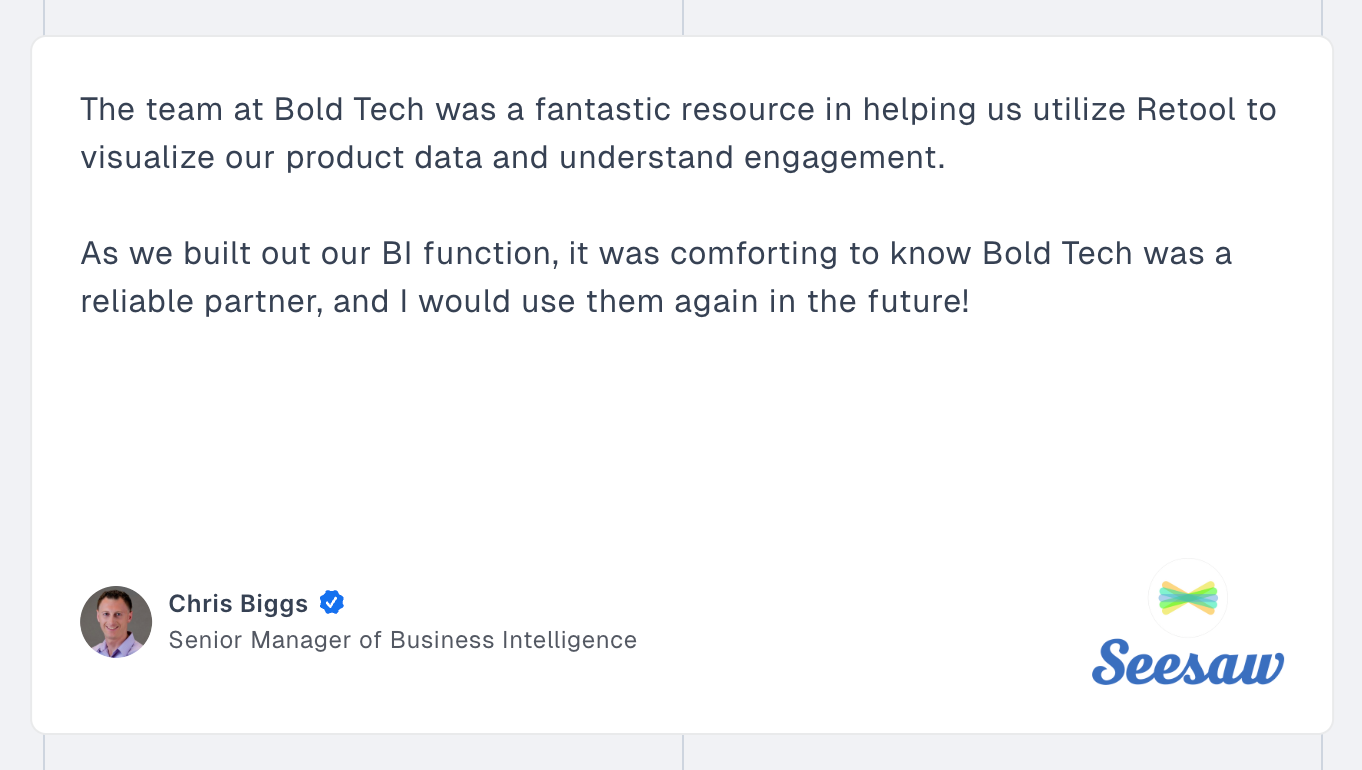
You can download the LMS template at the bottom of this page, but first, let’s give you a little tour...
Key features of this Education template
Custom LMS homepage to manage content, authoring, and versions
Educators and content teams often use a patchwork of tools and platforms, meaning version control and consistency can quickly become a nightmare. With Retool, you can centralize the resources you already use - such as your SQL databases, Google Docs, Hubspot CRM, and even Moodle and Canva, because Retool connects to any data source, either natively or via REST API.
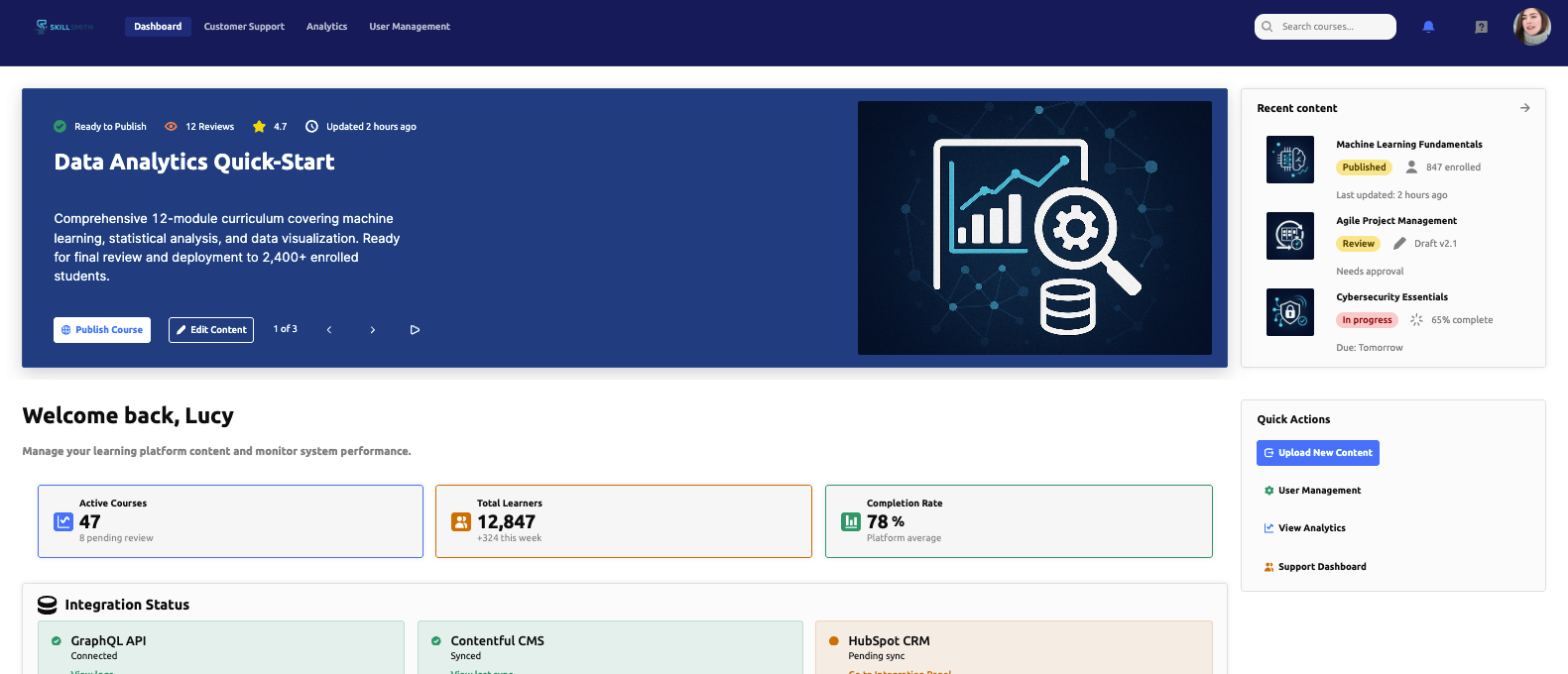
Many LMS platforms lock you into predefined course structures, but perhaps those that don’t truly fit your business model or workflows. Building a custom LMS allows your content teams to break the mold, unlocking creativity and making sure your tools fit your processes, and not the other way around.
Our LMS dashboard demonstrates how you could build workflows for content management and review that match your teams’ existing processes and approval flows, while being plugged into performance and analytics data so your decisions are informed by the data.
In Retool, it’s possible to create entirely custom content management systems that facilitate creating and editing content, as well as enabling bulk actions on content, managing, organizing, and building courses. What's more, you can build these apps so they scale as fast as you do, with the kind of infrastructure fit for enterprise companies.
While this is just a simple homepage UI framework, Retool enables developers to build out much more complex functionality, much faster than traditional code.
Customer support center
Strong relationships are at the heart of effective education. Education companies typically manage relationships with a wide range of stakeholders, not just with teachers but with students and, often, parents. With Retool, customer support can be built directly into a single, centralized app, rather than straddling complex combinations of tools, like Zendesk, Freshdesk, and Intercom.

Building a bespoke customer support tool means that CS agents can respond to customers directly and resolve actions from within the same interface - which is already connected to your resources and data - rather than wasting time jumping between multiple apps.
With Retool, it’s also easy to integrate AI features that help your CS team respond even faster, enabling your team to respond personally to more complex requests while simultaneously supporting those who need a quick and simple fix.
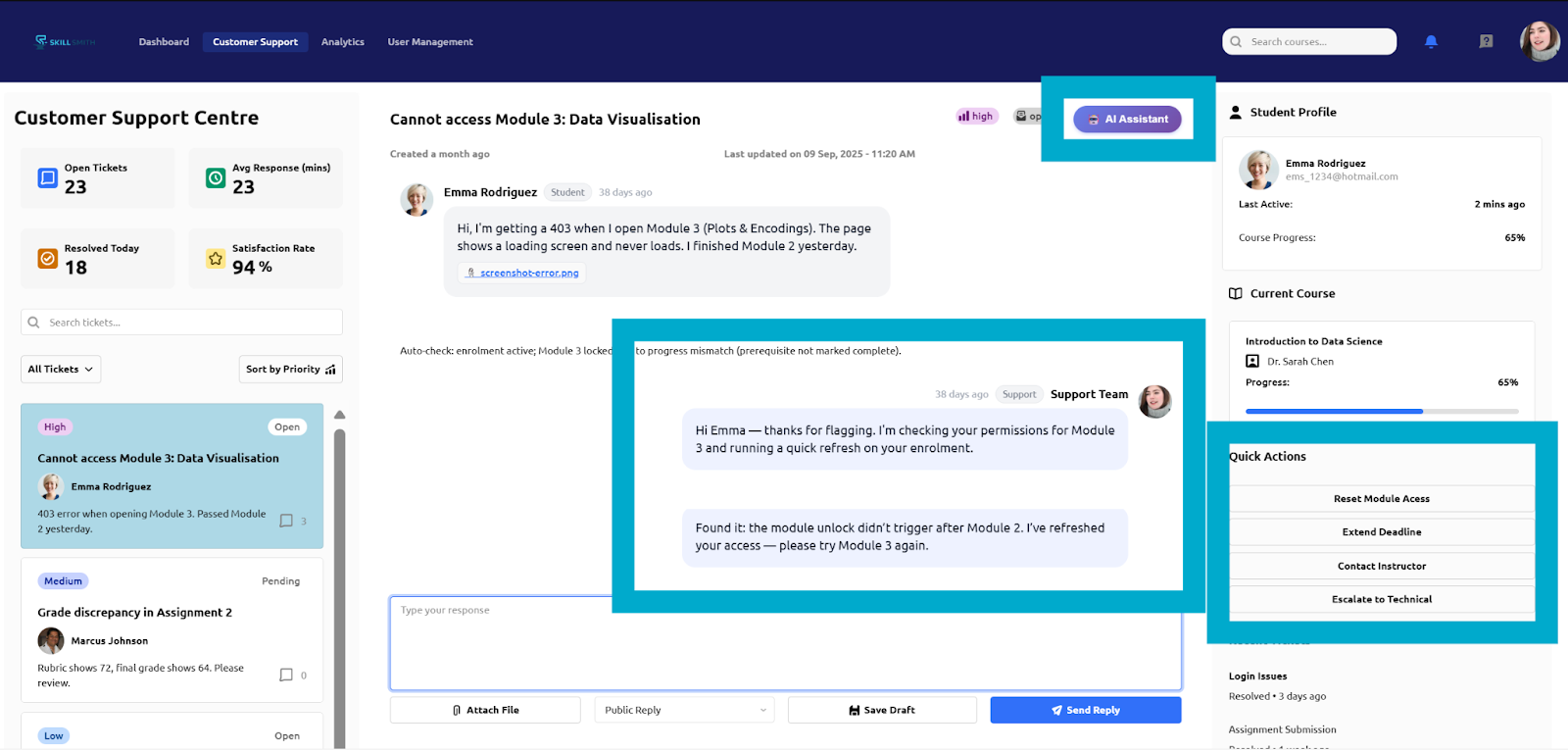
Using Retool, you can create functionality that supports exactly what you need… and cut out all the functionality that you don’t. That way, CS teams can be onboarded quickly and focus on doing their jobs using highly optimized and specific tools.
User analytics dashboard
As an education platform, your decisions need to be driven by data. Building robust, actionable data insights requires integrating multiple resources, data apps, and user analytics into bespoke dashboards that help you better understand your users and evolve to meet their needs.
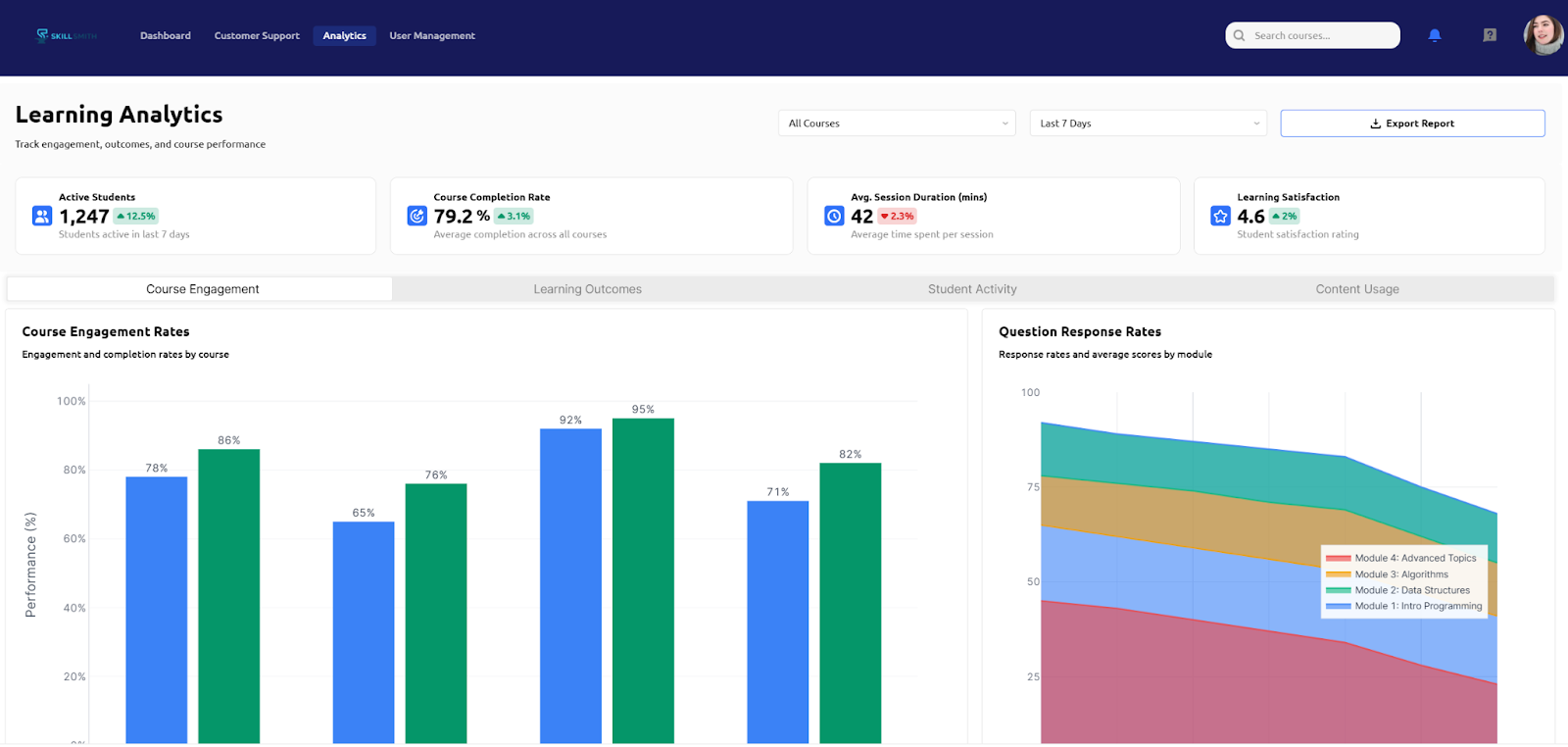
Traditionally, building this level of insight has meant relying on a complicated (and often costly) mix of business intelligence tools and software, such as Tableau or Power BI. While these platforms can be useful for some contexts, they often exist externally to your other apps, slowing down decision-making, that require specialized expertise to maintain and manage, and may well be overly complex for the needs of your company.
With this template, you can integrate your existing data sources and visualize them directly within your app, creating interactive, custom dashboards that surface the metrics that matter most, without leaving your platform or adding unnecessary complexity.
User management
Finally, managing app users is key, both for your back office and your product, facilitating their experience to ensure that everyone is getting the most out of your platform. Once again, you could integrate user management directly within the same app ecosystem, alongside your support app, so that all customer experience is managed in the same environment.
Once your Customer Support App and Main App are connected, you’ll be able to access this user information anywhere in your app system. This kind of interlinking created a centralized system that is both bespoke and efficient; by managing information in this way, you cut onboarding and training time and significantly improve productivity.
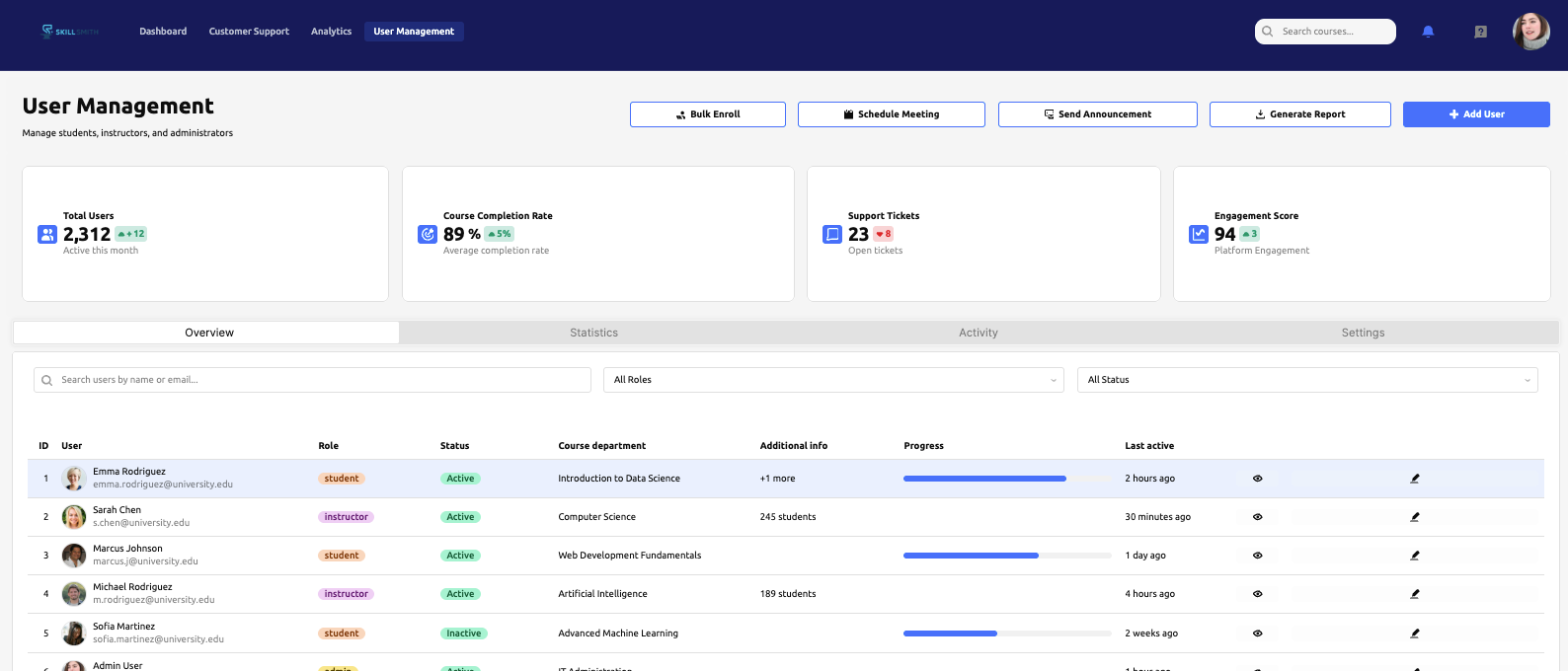
Before you go, let’s take a closer look at some of the UI highlights and inspiration that you could apply in your Retool apps!
Retool UI highlights and inspiration
Headline banner
When users log in, the banner at the top immediately delivers the headline for that day; it might be a new course, a recently published piece of content, or what the team’s been working on most recently. You can choose what you want your users to see, so it’s an effective way to communicate key and perhaps time-sensitive information with your users.

Quick actions
In several of the pages, we built in a quick actions section so that users can jump to whatever page they need quickly - no need to switch between several disjointed apps to achieve the same results.
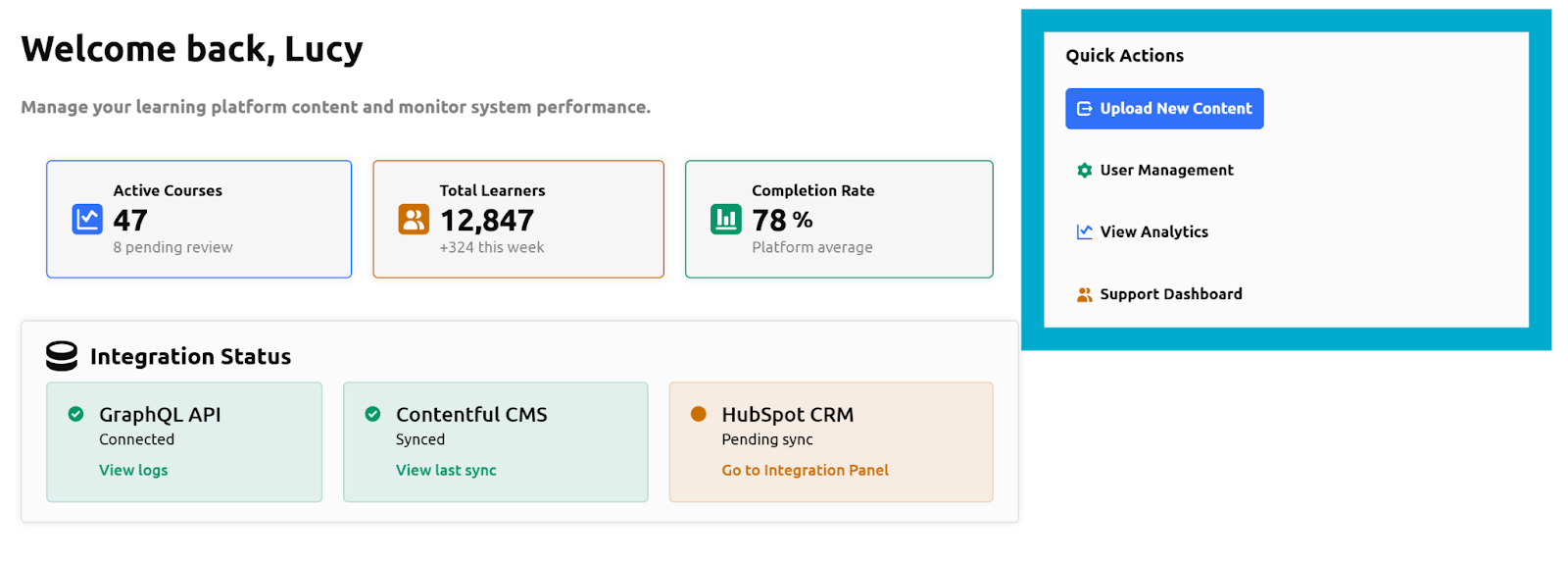
We’ve put this in a box container on the homepage, and on the user management page the most useful and frequently-employed actions are displayed above the user table. The most common actions on each are solid buttons using a primary color, and the secondary actions are designed to be less visually dominant, whilst still being clear to action with icons and colors.

Quick data overview
On their homepage, users can see an overview of the back office and get an instant snapshot of the state of affairs. The two column layout, with each sections separated with a subtle differentiation in background or outline color allows users to immediately understand and categorize the information they see. The use of color and icons in the Integration Status segment immediately notifies them of any issues.

The data summary in the Customer Support app gives users a quick, overall understanding of the progress of the team and the status of various issues. Again, this simple layout with colored icons allows users to understand data at a glance.

Finally, the panel at the top of the user management surfaces an instant overview of what’s going on among your users, particularly focusing on any changes with the green and red secondary values, meaning you can immediately identify priorities.
Organizing data for full visibility

In the first panel of the customer support app, the agent can nimbly find and switch between requests. The middle panel is where the agent can interact directly with the customer and the third gives the agent access to information and context needed to resolve the issue (and even resolve the issue through Quick Actions) without leaving the page.
Despite there being a large amount of data and buttons on the page, organizing these into clear categories and using thoughtful components, color and positioning helps guide the users to the exact information they need.
This kind of simple and logical layout can cut resolution time to a fraction of what it was.
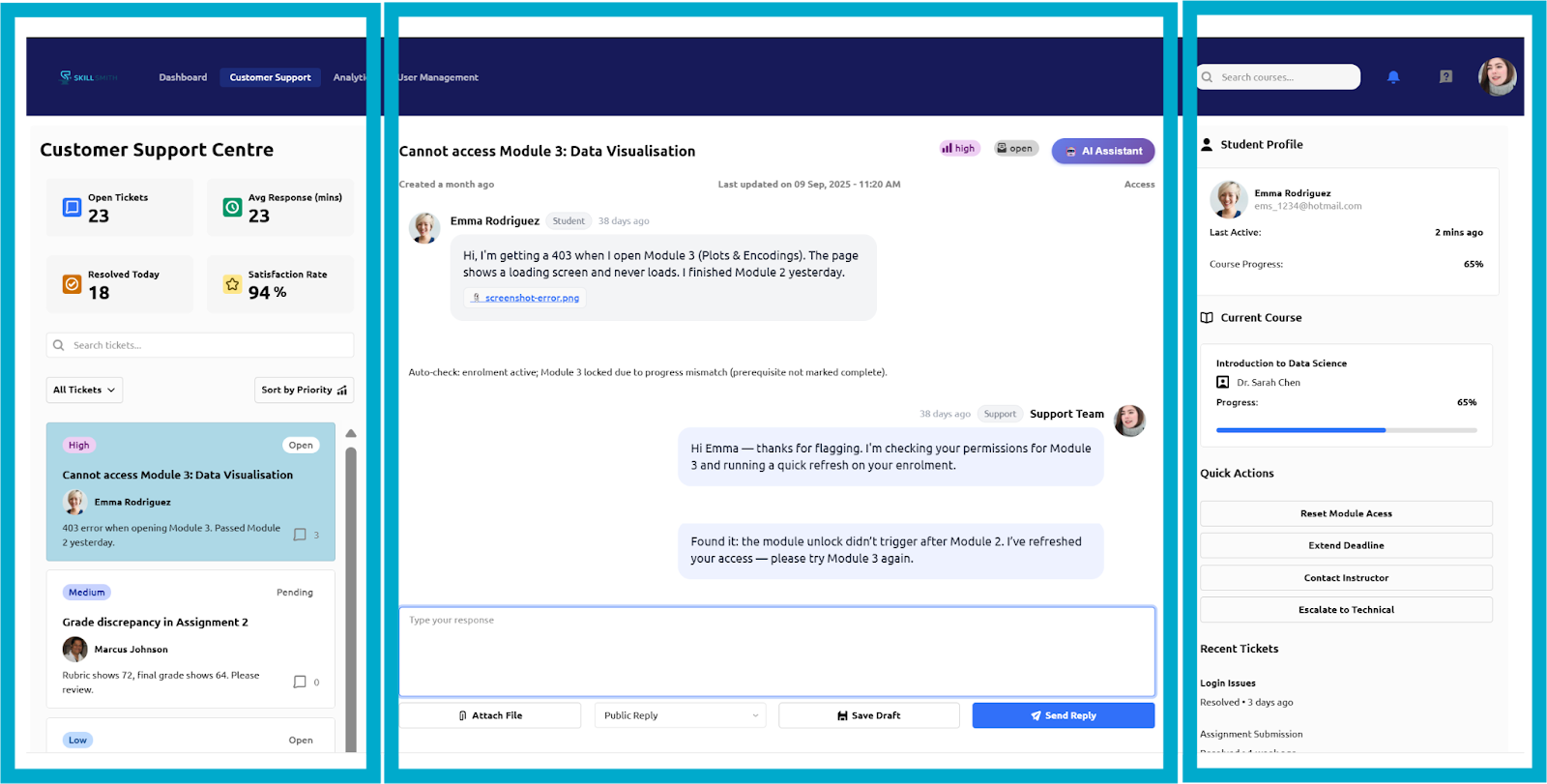
Be sure to check out our other templates for app ideas and UI inspiration, such as the Hubspot CRM UI, or Hospitable template, or head to the templates page for more.




